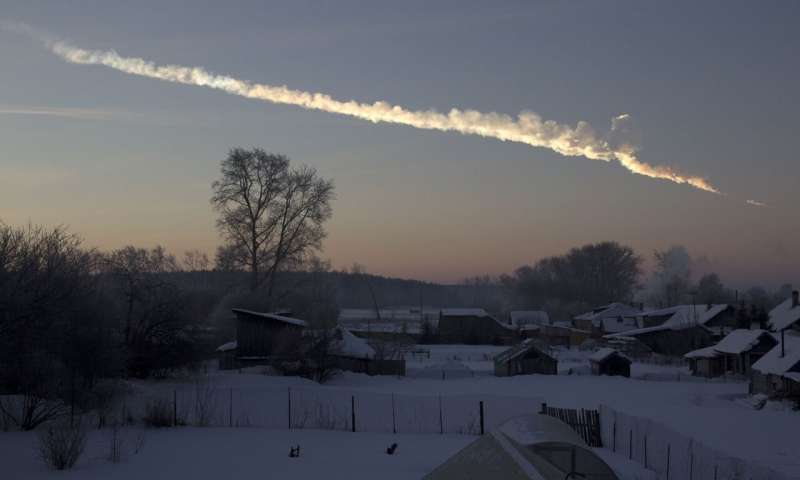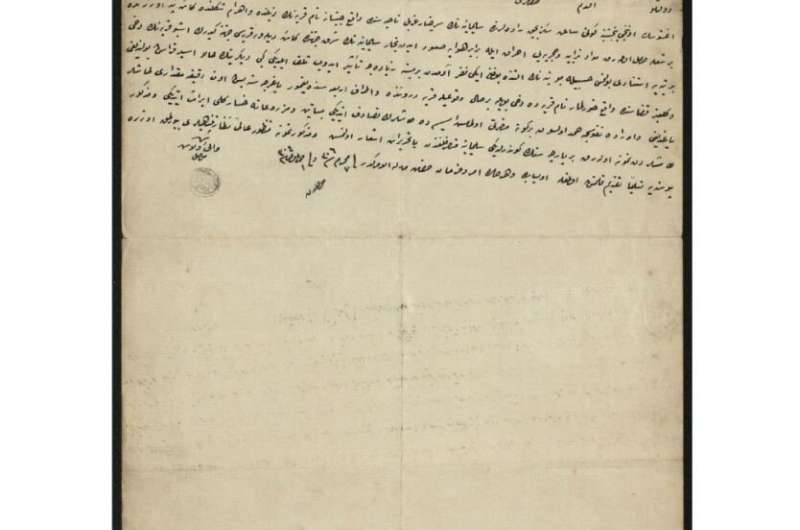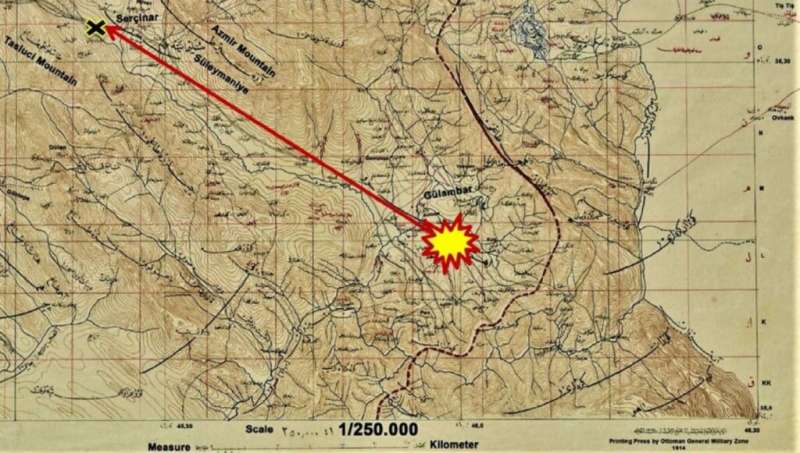This image of a vapor trail was captured about 125 miles (200 kilometers) from the Chelyabinsk meteor event, about one minute after the house-sized asteroid entered Earth’s atmosphere. Credits: Alex Alishevskikh
What are your chances of getting smacked – and killed—by a meteorite? One astronomer put the odds of death by space rock at 1 in 700,000 in a lifetime, while others say it's more like 1 in 1,600,000.
Computing the probability for such an untimely death is difficult because this type of event is so rare. In fact, even though thousands of meteorites are thought to hit the ground each year, in looking through the annals of meteorite history, there seemed to be no evidence that anyone had ever been killed by a meteorite. Until now.
Researchers combing through the dusty archives from the Republic of Turkey found credible records of someone being killed by a falling meteorite in Sulaymaniyah in the Kurdistan Region of Iraq. On August 22, 1888, multiple documents found in the General Directorate of State Archives of the Presidency of the Republic of Turkey recorded that a meteorite hit and killed one man while paralyzing another.
The reason this event had not been discovered until now is that the documents were written in an old Ottoman-Turkish language which borrows from both Arabic and Persian and is extremely hard to translate.
Using a word-by-word translation method where they first translated documents into Turkish and then English, researchers Ozan Unsalan and Altay Bayatl from Turkey and meteorite expert Peter Jenniskens from the US found three separate letters describing the incident.
From the research paper, an image of the first letter that was sent to Ahmed Munir Pasha by Mustafa Faik Mustafa Pasha, governor in Sulaymaniyah, after the event happened. Credit: Unsalan, Bayath and Jenniskens.
The documents, written by local authorities and sent to the government, described "a strong bright light was accompanied by smoke and traveled toward a village." The translation went on to say that meteorites fell for a period of about ten minutes "like rain." As an unfortunate consequence, one man was killed and the other was seriously injured. Also, crops were damaged in a manner consistent with a fireball shockwave, the researchers determined
But more importantly, the letters reported that meteorites were found on a hill near the village. The documents seemingly indicated—although the translation was not clear—that perhaps specimens of the meteorites were sent to the local government. But no further documentation of any specimens has been found so far.
There are numerous times in history where people have been injured and property damaged by meteoritic falls. The famous Tunguska event in Russia in 1908 flattened trees for miles. In 2013, an asteroid impact near Chelyabinsk, Russia took place and over 1,600 people reported to the hospital for injuries, while building were damaged from the airburst shock wave. And back in 1954, a woman named Ann Hodges was hit by a space rock when it fell through her roof and injured her hip. There were reports of a man killed in India in 2016, initially claimed to be from an airburst, but it was later ruled to from be an explosion with an Earthly origin.
But the newly uncovered documents seem quite credible, according to the paper, published in Meteoritics and Planetary Science.
The original map showing the fall area. “X”-shaped sign at the end of the meteor’s possible trajectory (based on the explanations in the historical manuscripts) indicates the approximate location of the man who was reportedly killed by the impact of a meteorite. “Star-shaped” sign at the lower right side of the map depicts the approximate explosion location over the Gulambar sky. Scale in kilometers is indicated at the bottom, below the notation of 1:250.000 on the original map (written in Ottoman Turkish as well next to the scale). Credit: Unsalan et al., Meteoritics and Planetary Science, 2020.
"This event is the first report ever that states a meteor impact killed a man in history," the researchers said. "Due to the fact that these documents are from official government sources and written by the local authorities … we do not have any suspicion on their reality."
They added that they can't speculate on whether the stones sent to the government are really meteorites since, at this point, they do not have any real physical evidence or even a real sample. But they are still looking through the archives for more details, since these types of Ottoman Turkish documents are now being digitized and translated. The researchers say there could be more records in archives, just waiting to be discovered.
More information: O. Unsalan et al. Earliest evidence of a death and injury by a meteorite, Meteoritics & Planetary Science (2020). DOI: 10.1111/maps.13469
Journal information: Meteoritics and Planetary Science
Source Universe Today
























